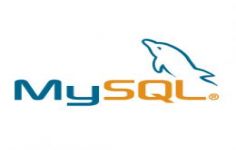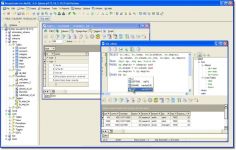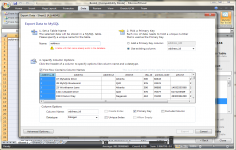 MySQL 5.5.46
MySQL 5.5.46
MySQL AB - ( Open Source)
MySQL is a successful open source database used in most web applications, e-commerce and online transaction processing.
MySQL is one of the world's most famous and used open source database. The software can be used to manage web applications, e-commerce and online transaction processing since MySQL database incorporates support those transactions. It is also commonly associated with PHP when it comes to managing websites.
With standard JDBC , ODBC, and Net, the developer can choose the programming language. MySQL has the advantage of working with almost all the popular operating systems and communicate easily with programming languages ​​such as C, C + +, VB, C #, PHP, Python, Ruby, Java, Perl, Eiffel, etc.MySQL replication allows you to create profitable applications. In addition, it enables the development of typologies replication complex and massive chain.Its reliability and robustness, performance, ease of use makes MySQL have more success than anticipated.
- Title:
- MySQL 5.5.46
- File Size:
- 39.3 MB
- Requirements:
- Windows 9x / 2000 / XP / Vista / Windows7 / Windows8
- Language:
- en-us
- License:
- Open Source
- Date Added:
- 01 Oct 2015
- Publisher:
- MySQL AB
- Homepage:
- http://www.mysql.com
- MD5 Checksum:
- 7638809E66214E917EEA58ACDC8793D9
# Functionality Added or Changed
* yaSSL was upgraded to version 2.3.8.
* yaSSL was upgraded to version 2.3.7d. This fixes a connection-failure issue when used with the thread pool plugin.
# Bugs Fixed
* InnoDB: A data corruption occurred on ARM64. GCC builtins did not issue the correct fences when setting or unsetting the lock word.
* InnoDB: In READ COMMITTED mode, a REPLACE operation on a unique secondary index resulted in a constraint violation. Thanks to Alexey Kopytov for the patch.
* InnoDB: The IBUF_BITMAP_FREE bit indicated that there was more free space in the leaf page than was actually available.
* InnoDB: Setting lower_case_table_names=0 on a case-insensitive file system could result in a hang condition when running an INSERT INTO ... SELECT ... FROM tbl_name operation with the wrong tbl_name letter case. An error message is now printed and the server exits when attempting to start the server with --lower_case_table_names=0 on a case-insensitive file system.
* Partitioning: CREATE TABLE statements that used an invalid function in a subpartitioning expression did not always fail gracefully as expected.
* Partitioning: ALTER TABLE when executed from a stored procedure did not always work correctly with tables partitioned by RANGE.
* Certain subqueries as arguments to PROCEDURE ANALYSE() could cause a server exit.
* mysql_ssl_rsa_setup could create an unwanted .rnd file in the data directory. (The file is actually created by openssl, which mysql_ssl_ras_setup invokes. mysql_ssl_rsa_setup now cleans up the file.)
* An assertion could be raised due to incorrect error handling if a SELECT ... FOR UPDATE subquery resulted in deadlock and caused a rollback.
* Servers linked against yaSSL and compiled with GCC 4.8.2 could fail to respond correctly to connection attempts until several seconds after startup.
* For tables with subpartitions, the server could exit due to incorrect error handling during partition pruning if the partition could be identified but not the subpartition.
* DELETE could check privileges for the wrong database when table aliases were used.
* Within a trigger, use of a cursor that accessed OLD or NEW values from a row could cause a server exit.
* MySQL sometimes produced no warning when it was unable to interpret a character in a given character set.
* For MySQL distributions linked against yaSSL, a corrupt client key file could cause clients to exit.
* Execution of certain BINLOG statements while temporary tables were open by HANDLER statements could cause a server exit.
* On Windows, setting query_cache_min_res_unit to too large a value could result in a value of 0 and a subsequent server exit.
* RPM installation scripts if configuration files contained multiple datadir lines. Now the last datadir line is used.
* For wait events, the Performance Schema uses the CYCLE timer by default, but failed to fall back to a different timer if CYCLE was unavailable.
* Updating VARCHAR and TEXT columns in the same UPDATE statement could produce incorrect results. When a VARCHAR column was assigned to a TEXT column and the VARCHAR column was then set to a different value, the TEXT column's result contained the VARCHAR column's new value.
* mysqladmin -u root -p could exit with a segmentation fault.
* mysqlimport --use-threads did not actually use multiple threads.
* View creation from a UNION failed with a duplicate-column error if a SELECT statement in the UNION other than the first used the same column name multiple times.
* Empty XML elements having the form <element/> were not handled correctly by the LOAD XML statement.
Related software
4.7/5 from 47 users


